Condition Evaluator (CE)¶
General Description¶
The primary objective of AICE AICE tool is to enable users to obtain comprehensive knowledge of the machine status, based on evaluating its condition at machine and component level. The definition of the machine configuration is essential to give context to the obtained results and is done by identifying the different machine components and its associated process variables. Normal behaviour is characterized during some test cycles, included in the data, to obtain characteristic patterns that will be used and compared to future test cycles to evaluate how the machine is performing, compared to the identified pattern. As a result, the AIDEAS Condition Evaluator provides precise assessments of component and machine conditions. Whenever an initial degradation has been diagnosed it can serve as a trigger for the AIPM tool that will assess the Remaining Useful Life of the component of machine.
Usage Viewpoint¶
Use Model¶
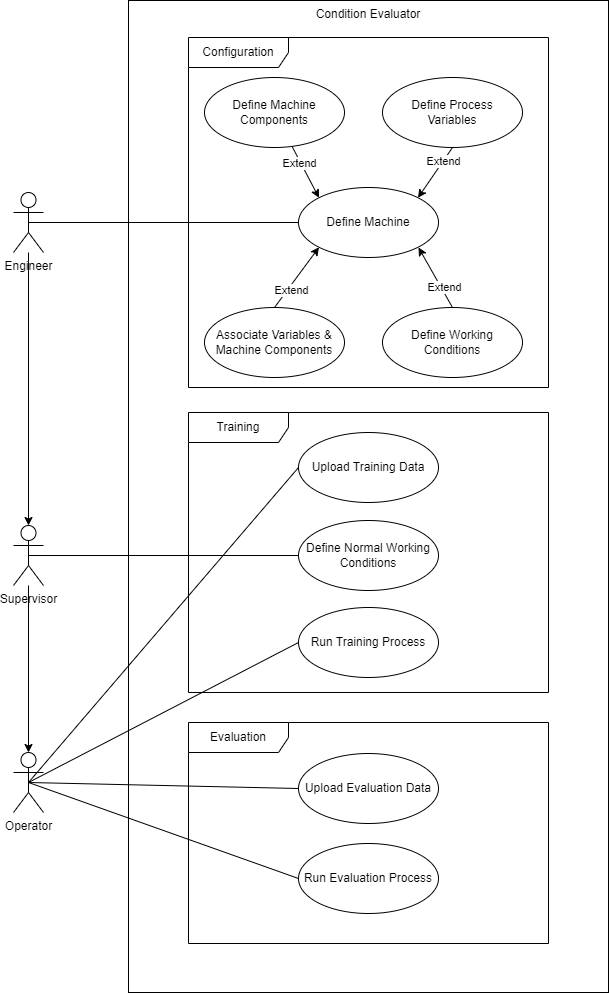
Description¶
To initiate the configuration process for deploying Condition Evaluation, the engineer’s involvement is crucial to ensure accurate definition of the monitored machine’s scope. The following tasks are essential: Firstly, identifying and defining different machine components, which correspond to relevant study areas within the machine. Secondly, determining the various process variables such as temperatures, currents, pressures, speeds, and others. Lastly, establishing the associations between process variables and components, specifying which variables directly impact each component. Additionally, defining working conditions, such as the currently utilized tool, specific processes executed, or conditions indicating machine activity, may be necessary.
Once the machine is defined, collaborative efforts between the supervisor and operator are required to train a machine model. The supervisor will establish normal working conditions for each studied process variable, setting thresholds that define appropriate machine behavior. To train the model, a dataset sourced from a file or database is necessary, alongside the selection of an algorithm and its corresponding parameters. The training process can then commence.
In the final stage, the operator conducts the evaluation process, which is an ongoing task. Condition evaluation is performed to assess the overall status of the machine as a whole and the status of individual components. The solution provides a score indicating whether the machine is operating correctly or not.
Each task executed by the operator can also be carried out by the supervisor, and this hierarchical pattern continues for higher-level users.
Home page¶
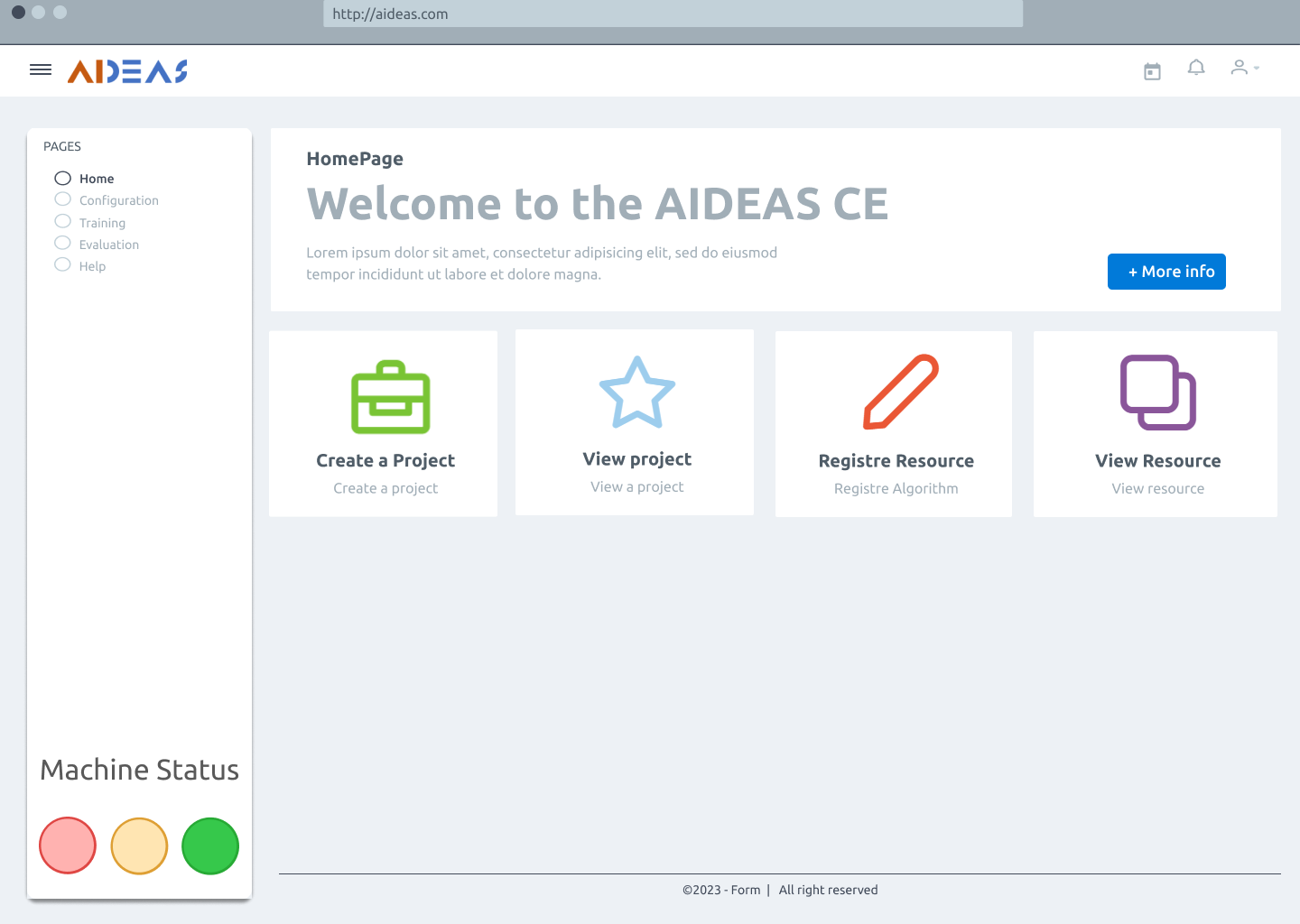
Configuration¶
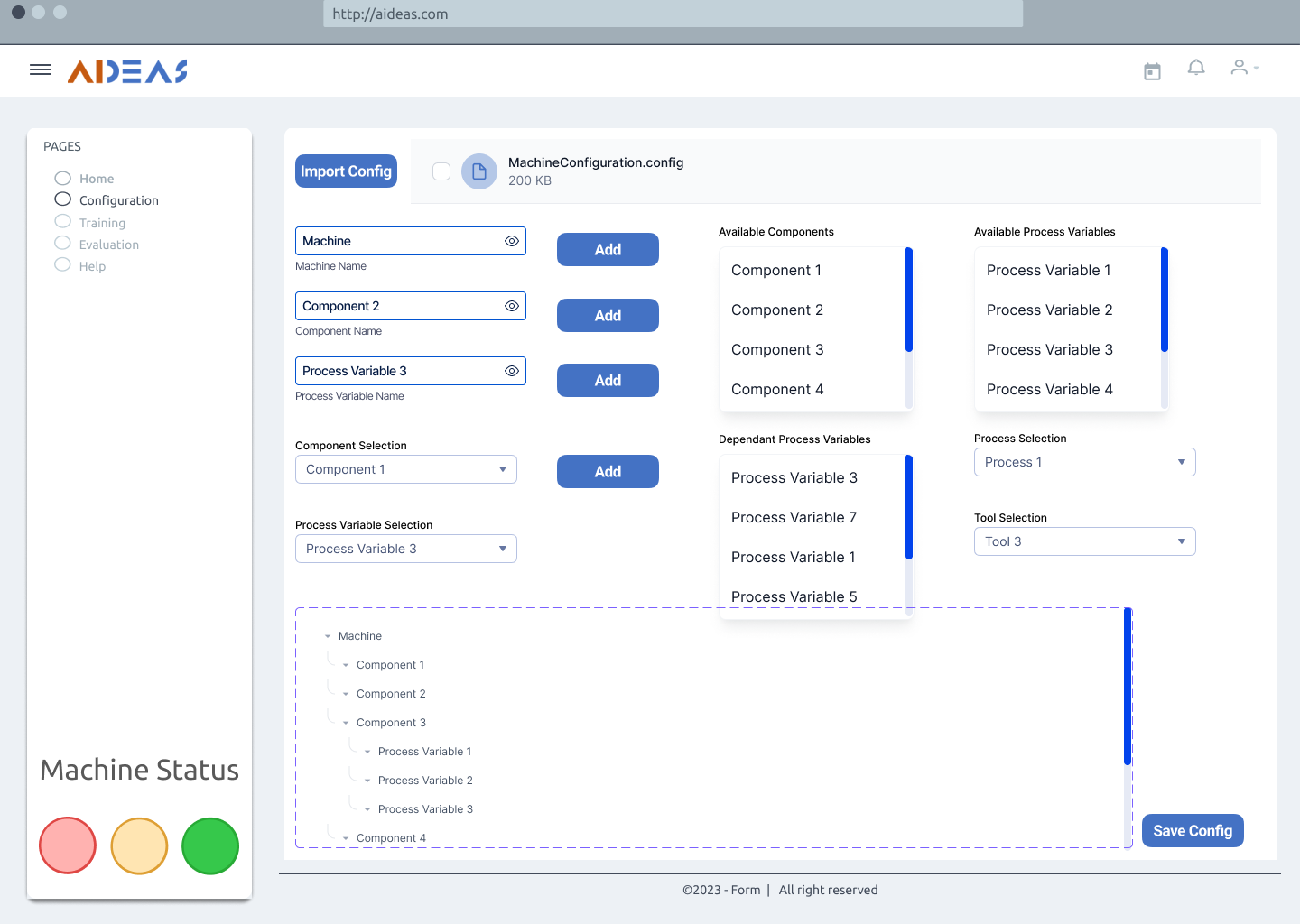
Training Parametrization¶
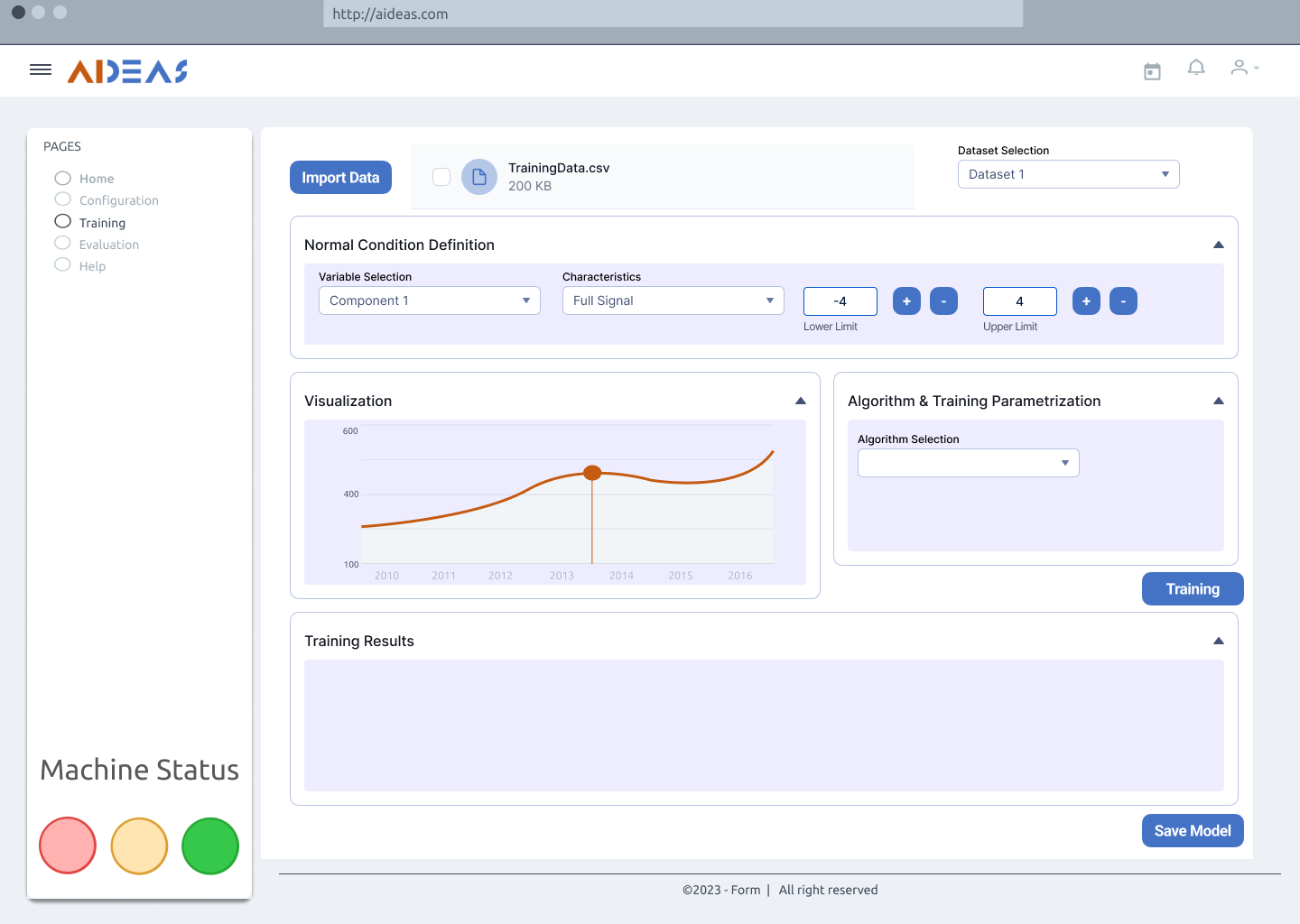
Evaluation¶
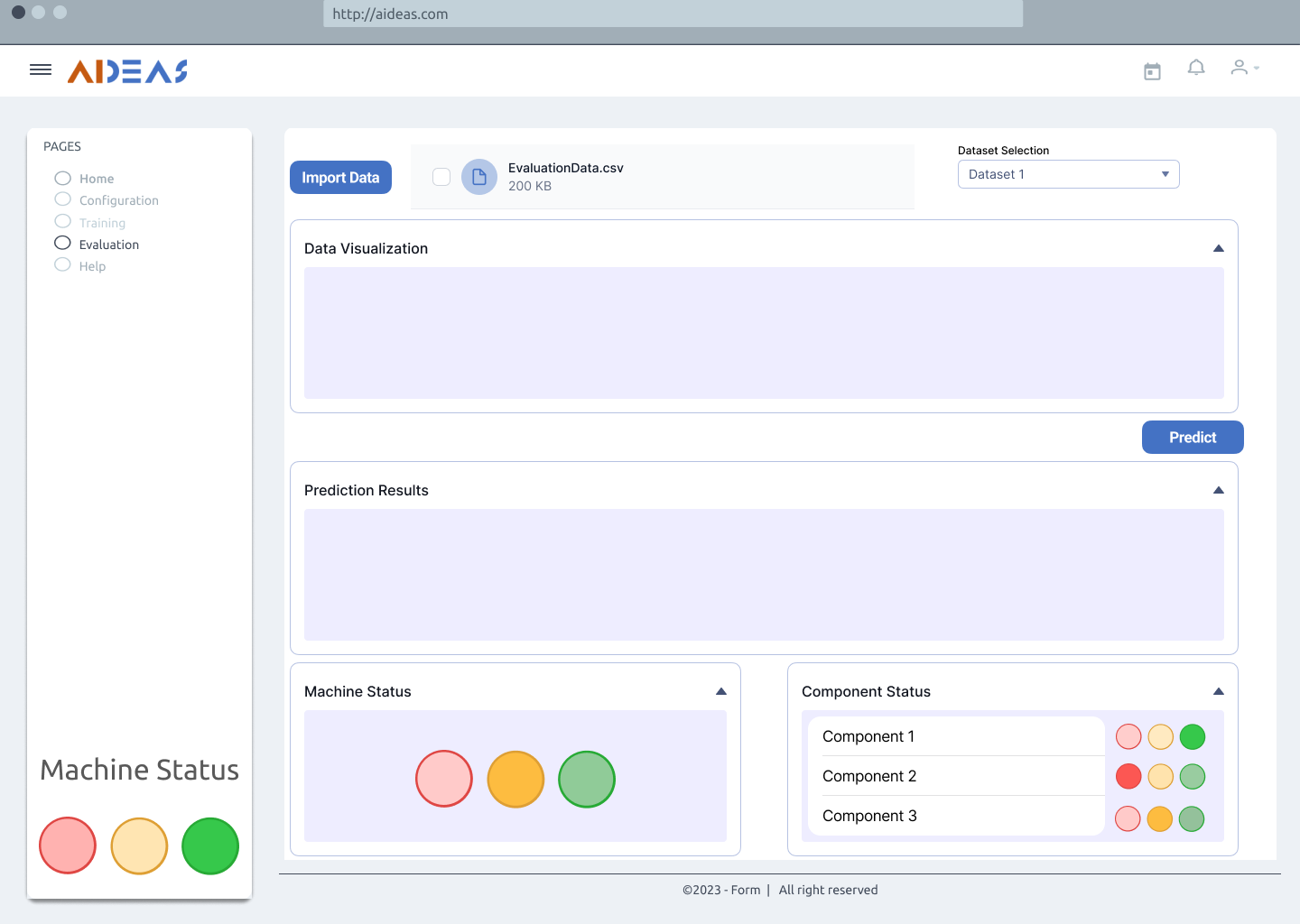
Usage activity diagram¶
The following image demonstrates the interaction between the different tasks and roles. No pilot distinction is made, as these are the same independent on the use case. This diagram illustrates the dynamic flow of interactions, offering a representation of the activities executed by the solution providing a clear understanding of the activities executed using the AICE solution.
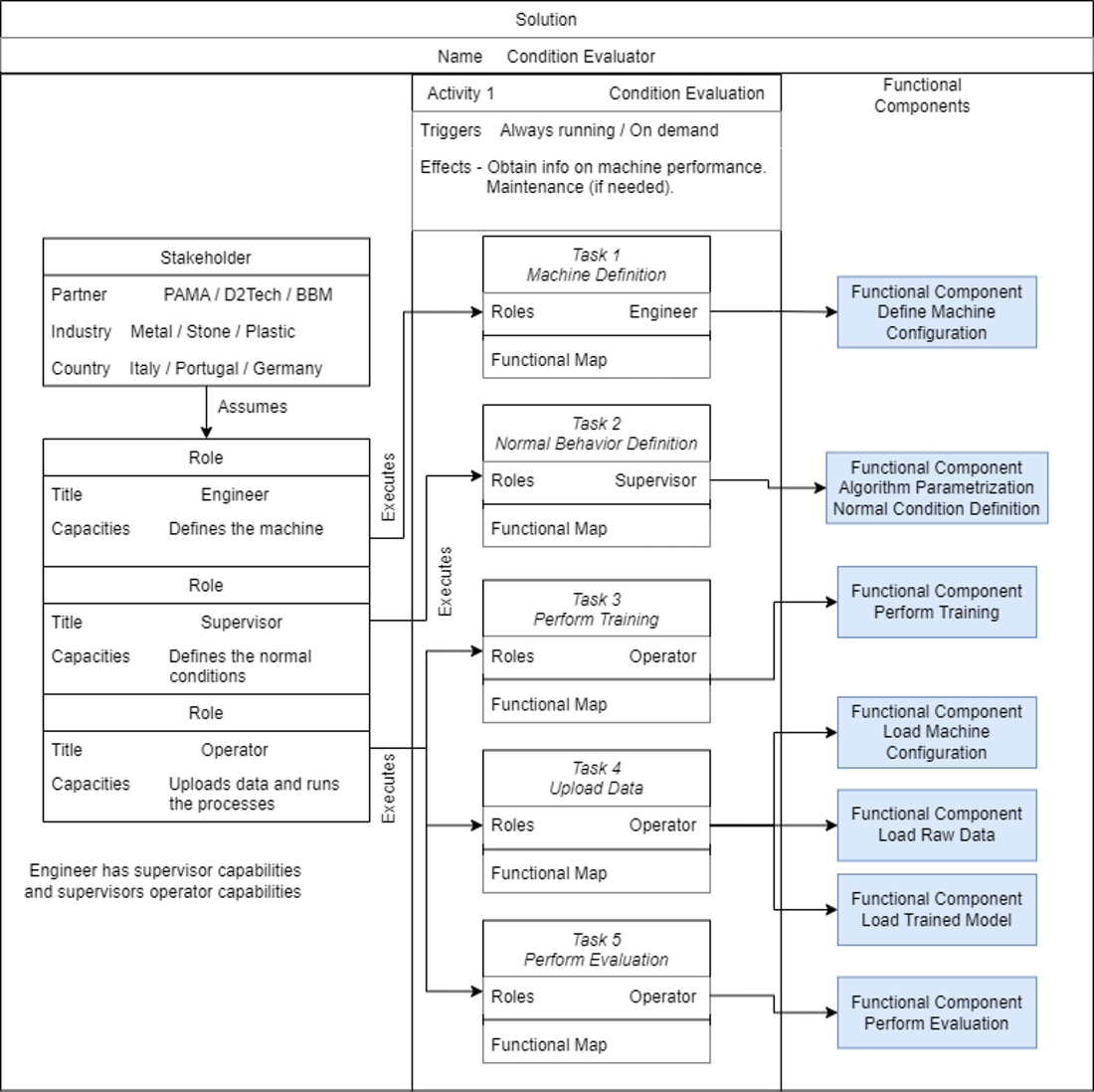
Functional Viewpoint¶
Functional diagram¶
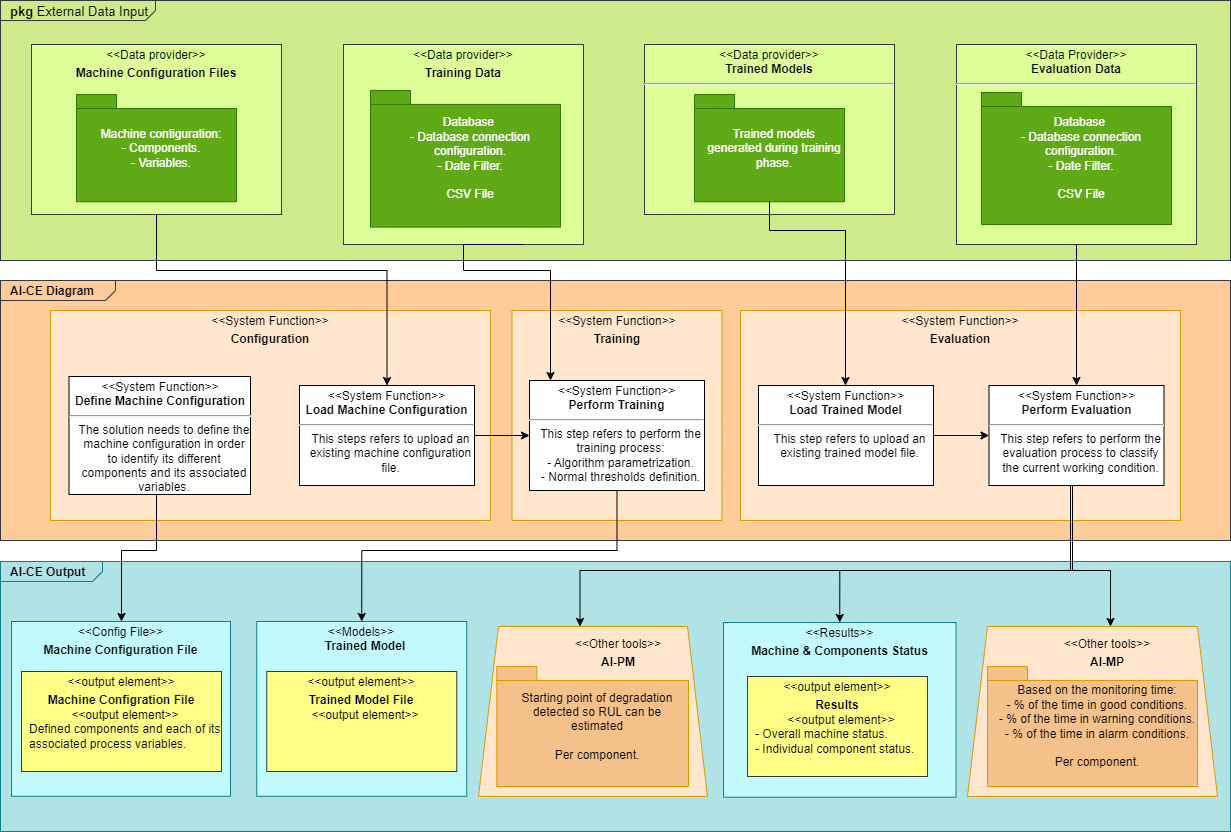
Functional description¶
What: The main feature of this component is to define if the machine, in which is deployed, or in any of its components are working in good conditions. Also, this evaluation could be computed in pseudo real time.
Who: Process Engineer. C&I Engineer. Operator.
Where: Platform Tier.
Why: To monitor current working conditions.
Input and output data for each component¶
Define Machine Configuration¶
Inputs:
Machine – machine in which the solution is deployed.
Components – every subset of elements that define the machine.
Variables - each process variable that exist in the use case. Variables such as: speed, current, pressure, flow, temperature, …
Dependencies – relation between components and process variables. They define which process variables have a direct effect in a specific component.
Tool – if there are different tools
Process - if there are different processes carried out by the same machine.
Outputs:
Machine configuration file – its extension may vary depending on the machine in which will be deployed. Its format will be standardized independently of the solution, and it could be a JSON or xml file.
Load Machine Configuration¶
Inputs:
Machine configuration file generated.
Outputs:
Configure machine viewed as a hierarchy tree with the following levels:
Machine.
Component.
Process Variable.
A List with the relationship between component and variables.
A list of the different tools used.
A list of the different processes.
Perform Training¶
Inputs:
Training data – set of data gathered from a database or uploaded from a csv file.
Algorithm selection and parametrization – the desired algorithm must be selected, from a list, and parametrized.
Normal thresholds – normal working conditions must be defined with a set of thresholds indicating good, warning an alarm conditions.
Outputs:
Trained Model – once the training process has finished, a model could be downloaded from the frontend to be used as an input for the evaluation process. Model file extension is yet to be defined.
Load Trained Model¶
Inputs:
Model trained and generated during training phase.
Outputs:
Trained model statics.
Perform Evaluation¶
Inputs:
Evaluation Data - set of data, different from the training data, gathered from a database, periodically, or uploaded from a csv file.
Outputs:
The output may vary depending on the consumer of the results generated with this tool:
Machine in which the solution is deployed: the overall machine status and the status per component will be given. Data could be written directly to a database or could be downloaded by the user from the frontend.
AI-PM: the degradation starting point will be given when degradation is detected so RUL can be estimated. The degradation starting point will be given per component.
AI-MP: based on the monitoring time, the following indicators will be given; the percentage of the time in good conditions, the percentage of the time in warning conditions and the percentage of the time in alarm conditions. Also, these indicators will be given per component.
Software requirements¶
Software Component |
Description/Role |
Required Version/Configuration |
Dependencies |
|---|---|---|---|
Linux OS or Windows OS |
Operating system needed to use the tool |
Ubuntu 22.04 / Windows 10 Pro |
N/A |
Docker |
Build, share and run containers |
latest |
N/A |
Lifecycle¶
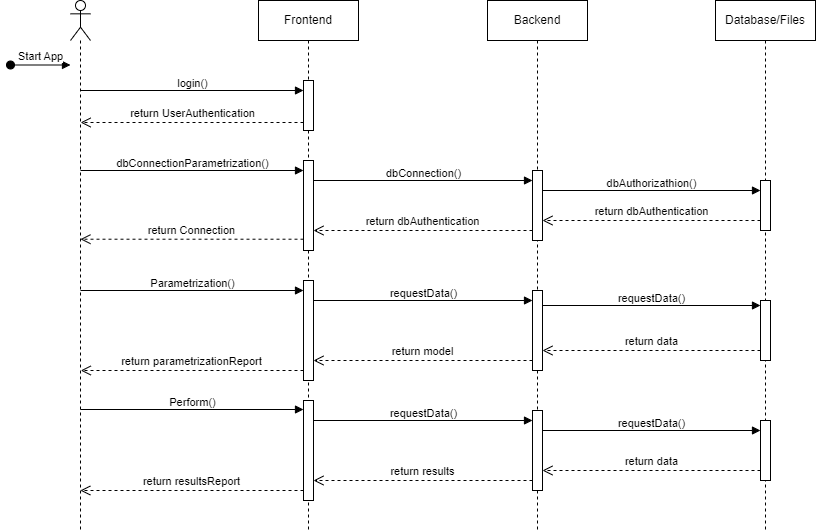
This sequence diagram illustrates the flow of interactions between the User, Frontend, Backend and Data/Files objects during the main processes. Login into the AIDEAS platform, parametrize a connection to an external database, parametrize the condition evaluation and perform it.
Objects¶
User: Represents the user interacting with the application.
Frontend: Represents the user interface and the presentation layer.
Backend: Represents the application logic and the server layer.
Database/Files: Represents the data or file storage layer.
Implementation Viewpoint¶
Description of implementation Component:¶
AI-CE is a toolkit that performs condition evaluation at both machine and component levels.
Technical Description of its Components:¶
Dependencies:
Development Language: - Python
Libraries: NumPy, Pandas, SciPy, Keras, Py Torch, TensorFlow
Container: Docker
Database need: MongoDB
Interfaces:
User Interface: Yes, REACT
Synchronous/Asynchronous Interface: RESTful APIs
Network/Protocols: HTTP/HTTPS
Data Repository: MongoDB
Requires:
Other AIDEAS Solutions: none
Solution architecture¶
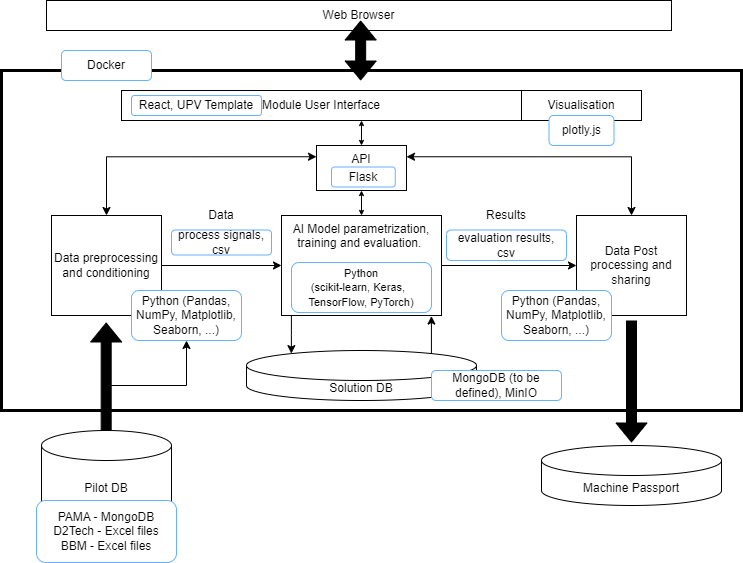
The backend of AI-CE will be implemented using Python, leveraging popular libraries commonly used in data science and machine learning. These libraries include NumPy for efficient array and matrix processing, Pandas for comprehensive data analysis and manipulation, and SciPy, Keras, PyTorch, and TensorFlow for training and evaluating machine learning models. On the other hand, the frontend of AI-CE will be developed using REACT, a JavaScript library, with Redux utilized for managing the application state. To ensure seamless communication between the backend and frontend, a RESTful API will be employed, with HTTPS protocols ensuring secure data transmission. Tools like Postman can be utilized for API testing. Additionally, Docker, a versatile platform for containerization, will be utilized to bundle all the necessary software components for easy deployment, management, and execution.